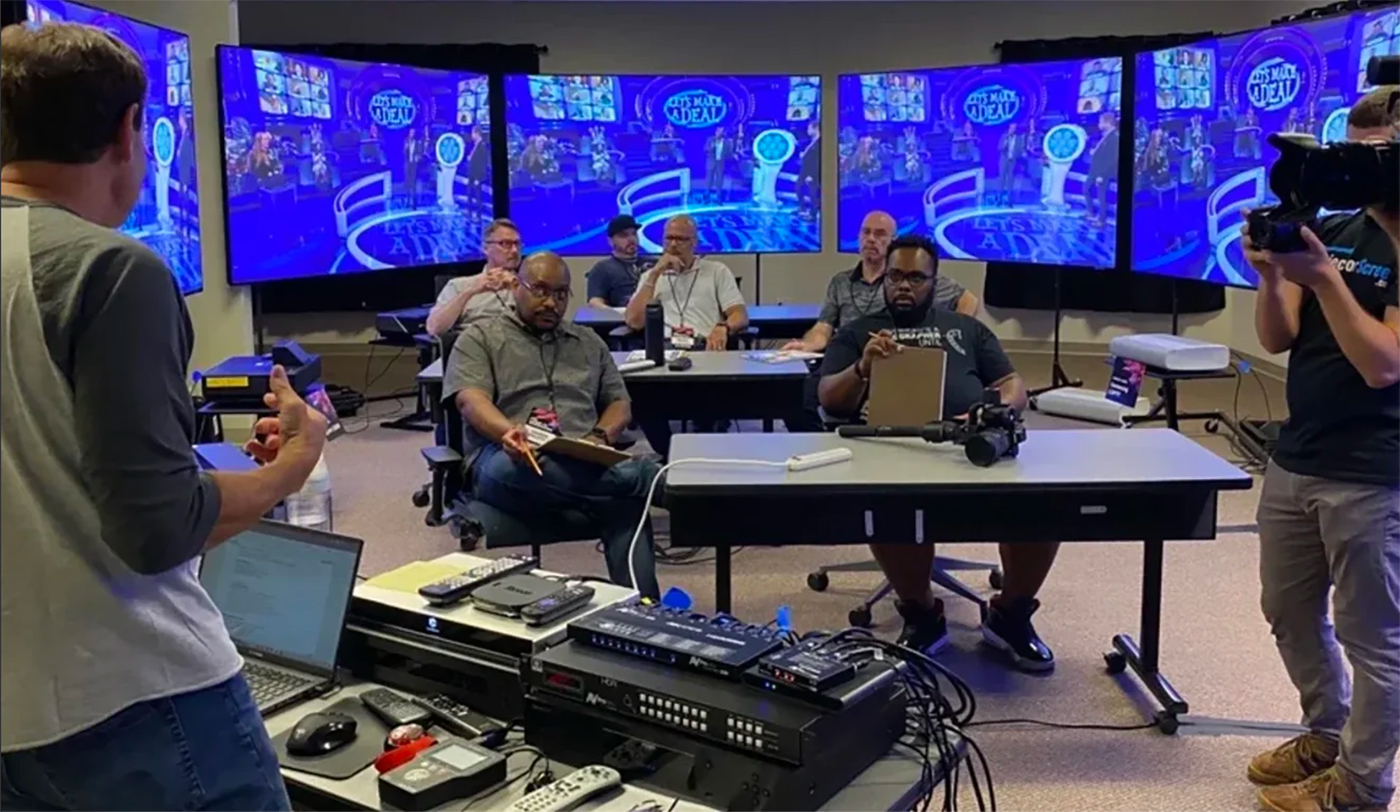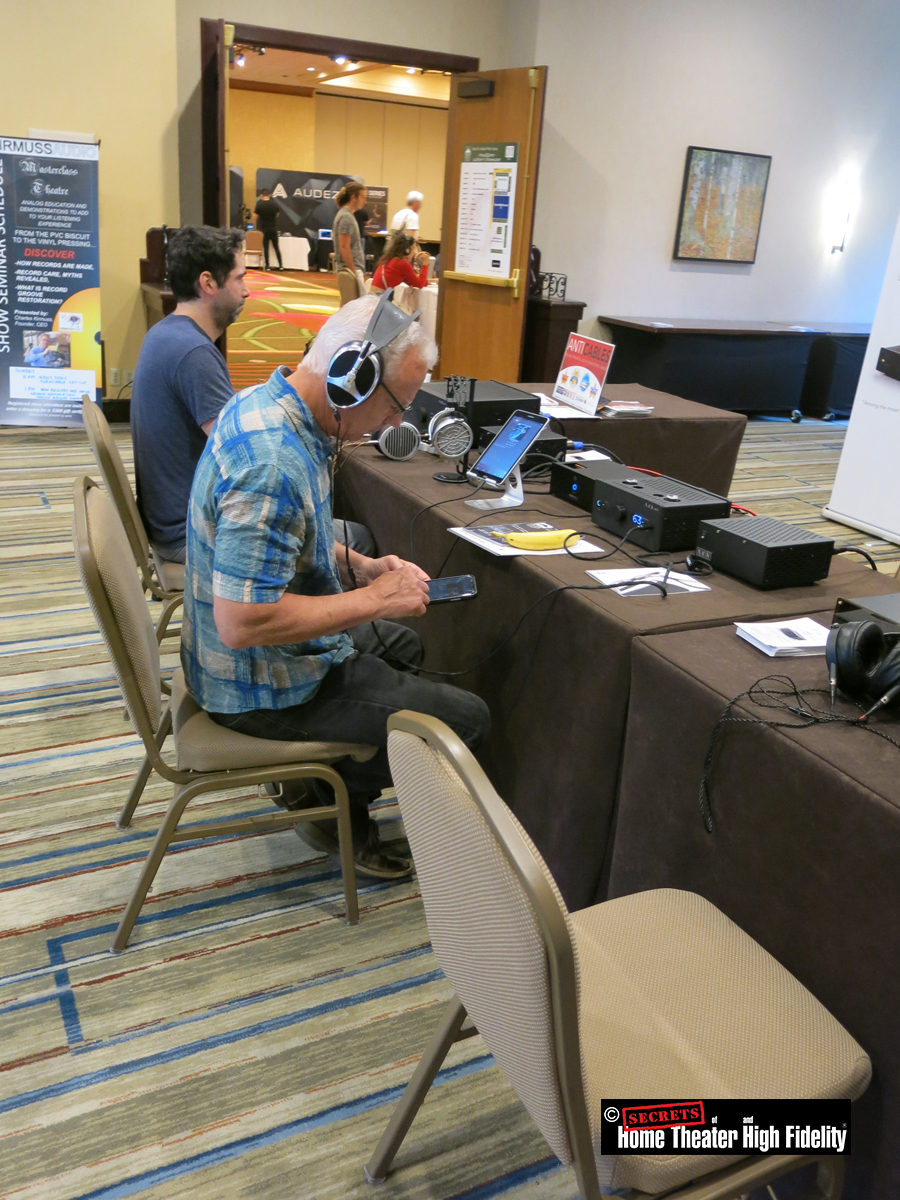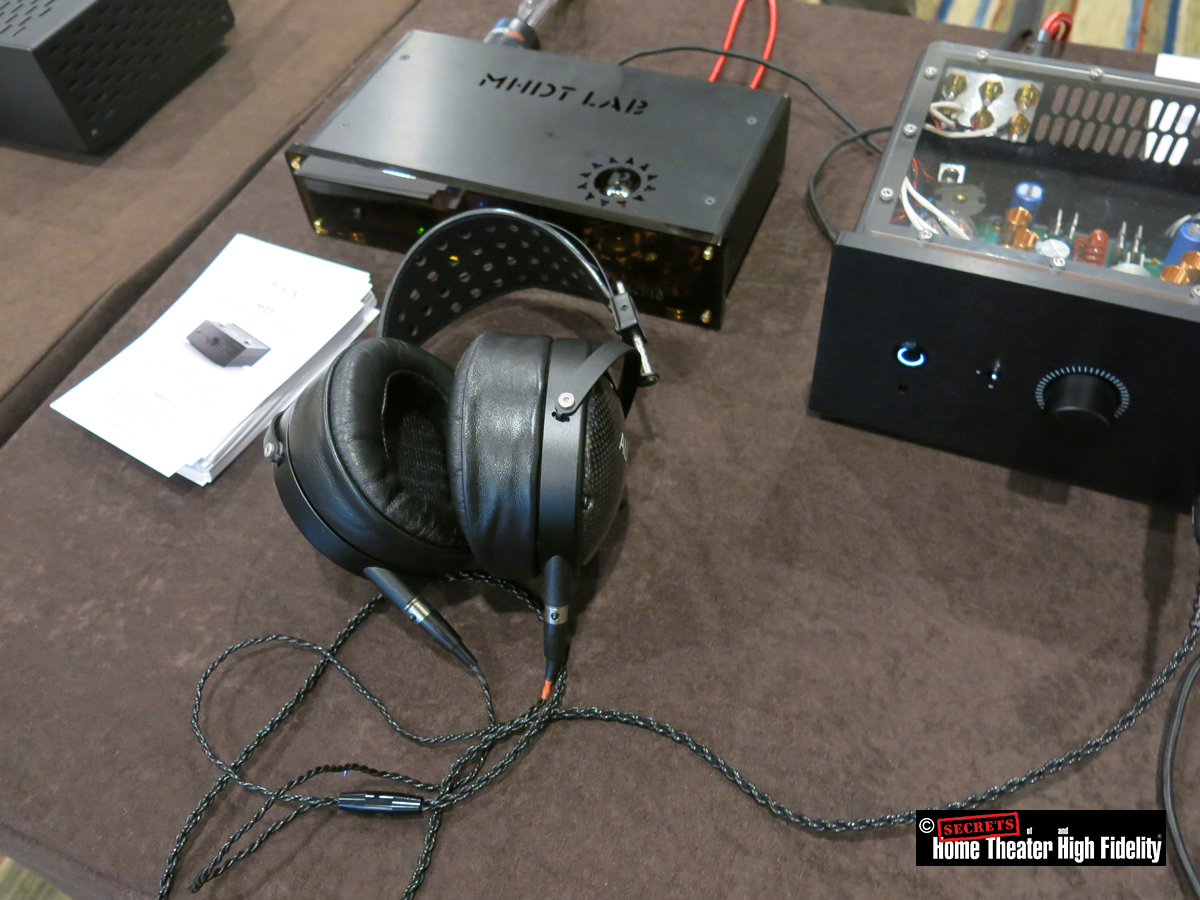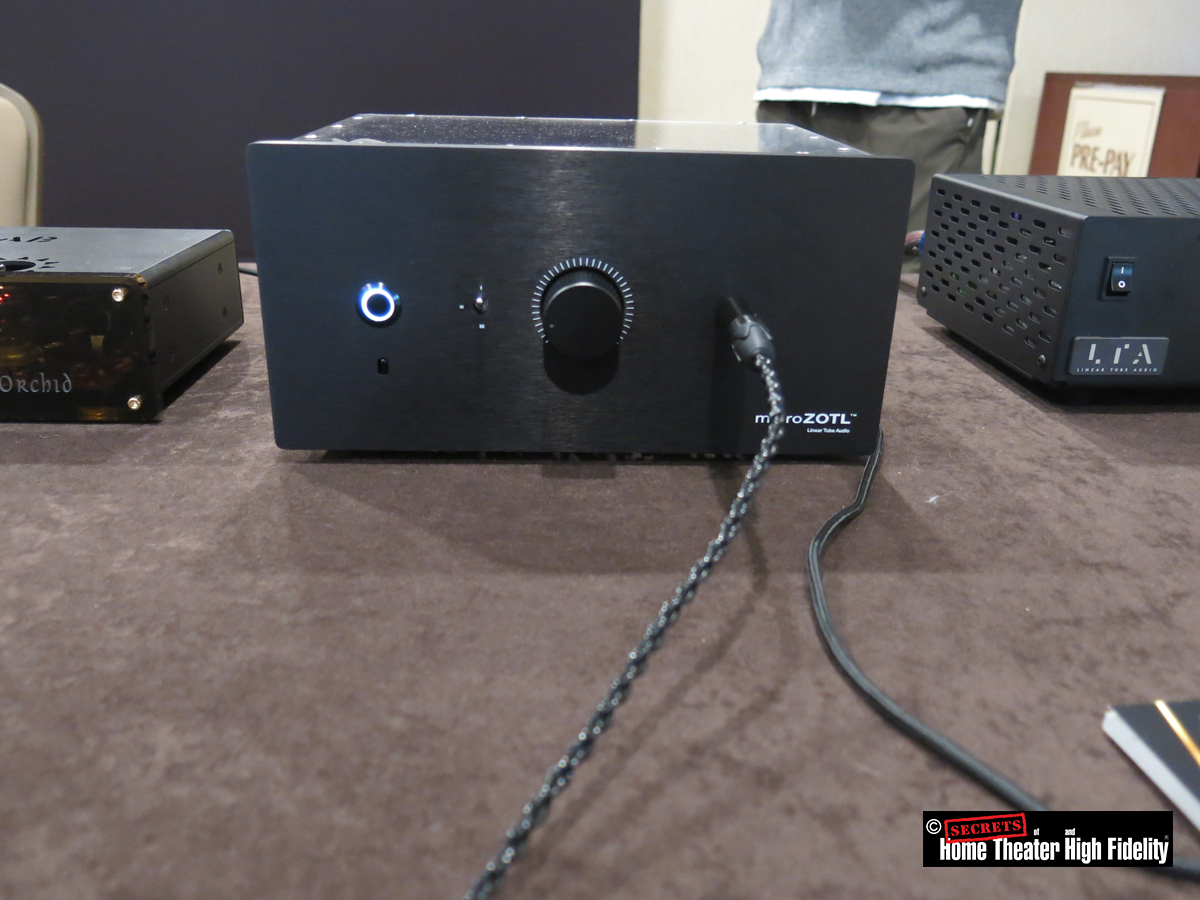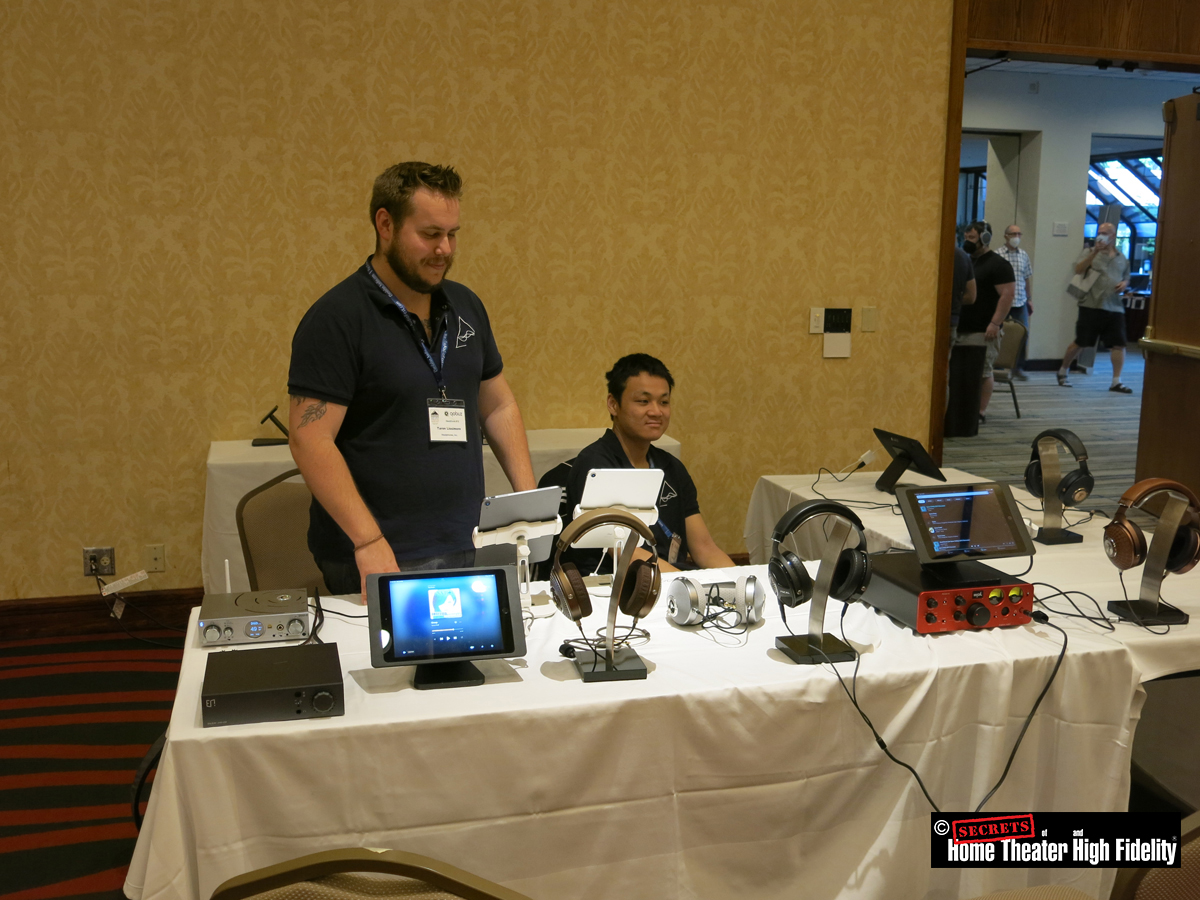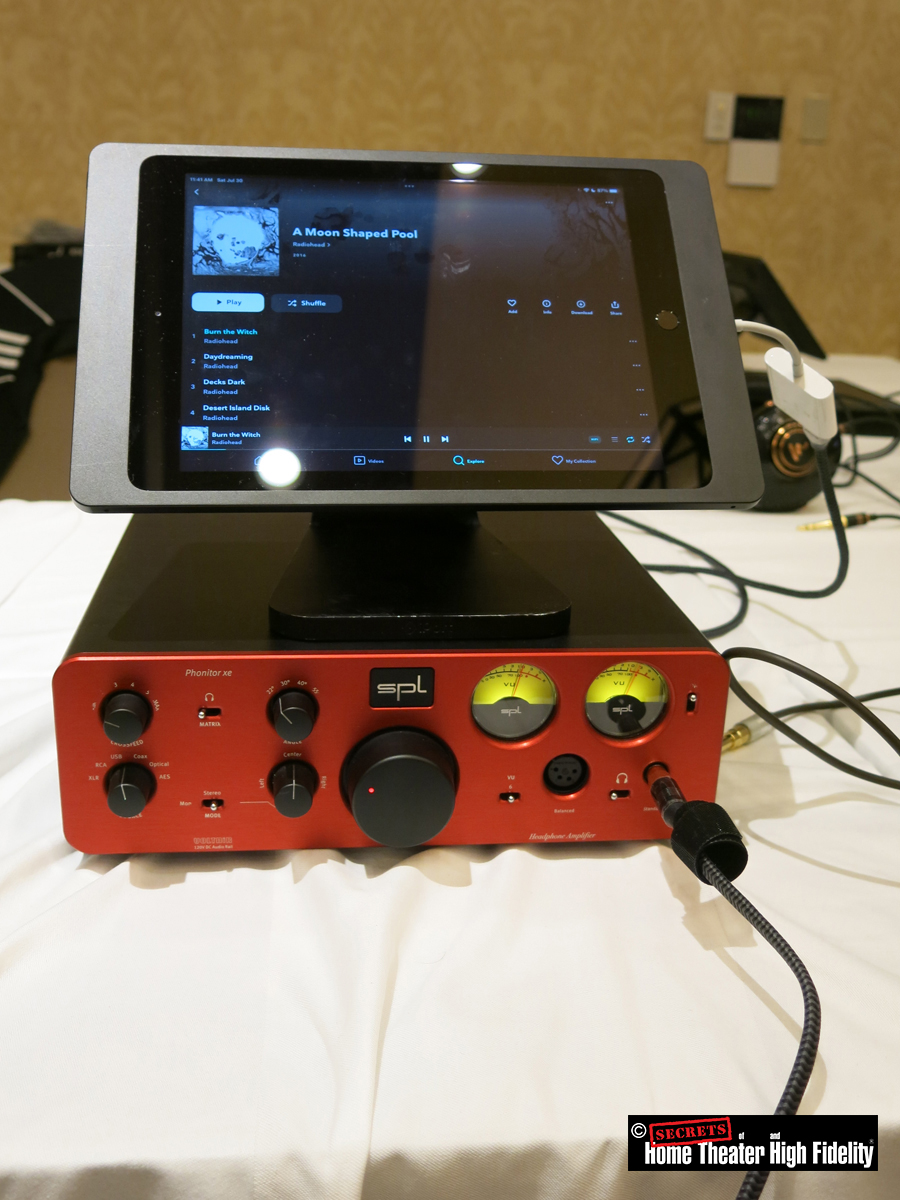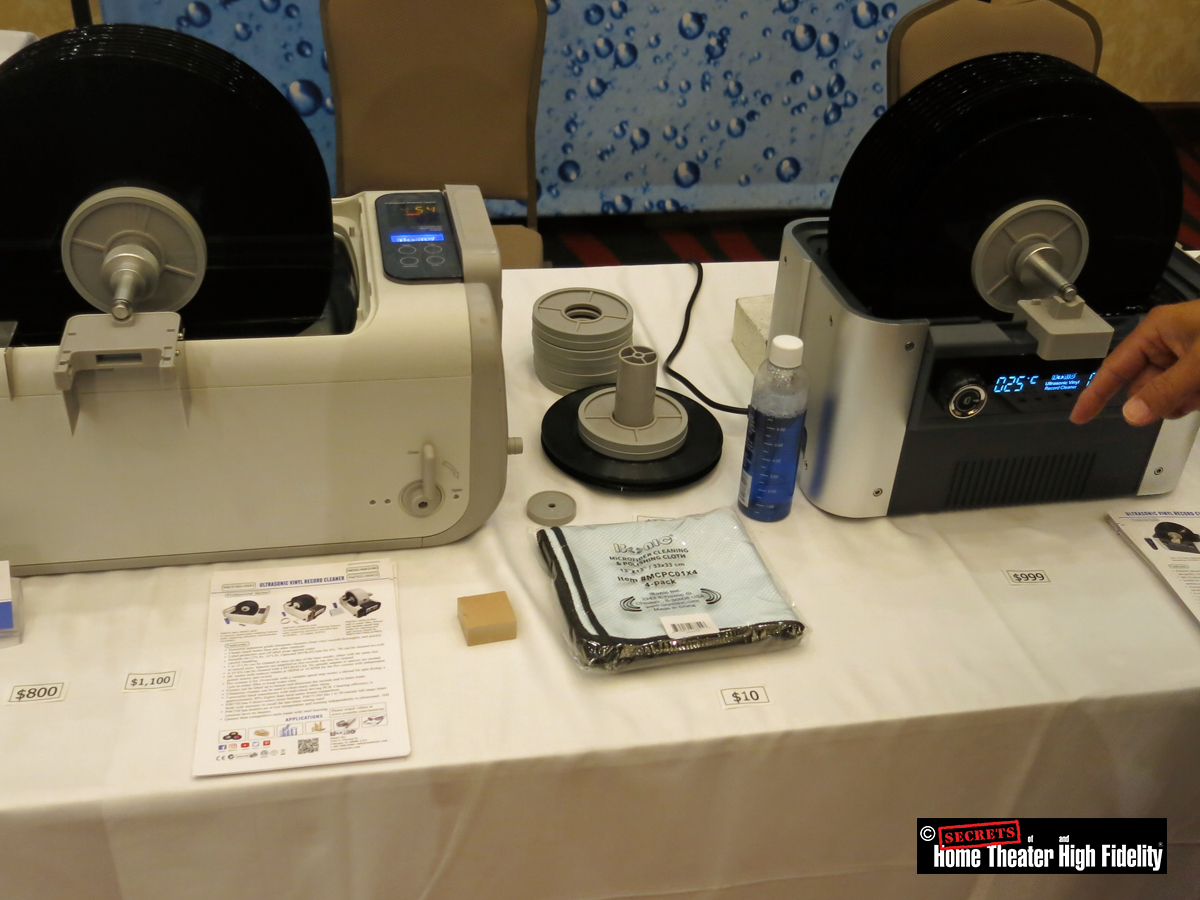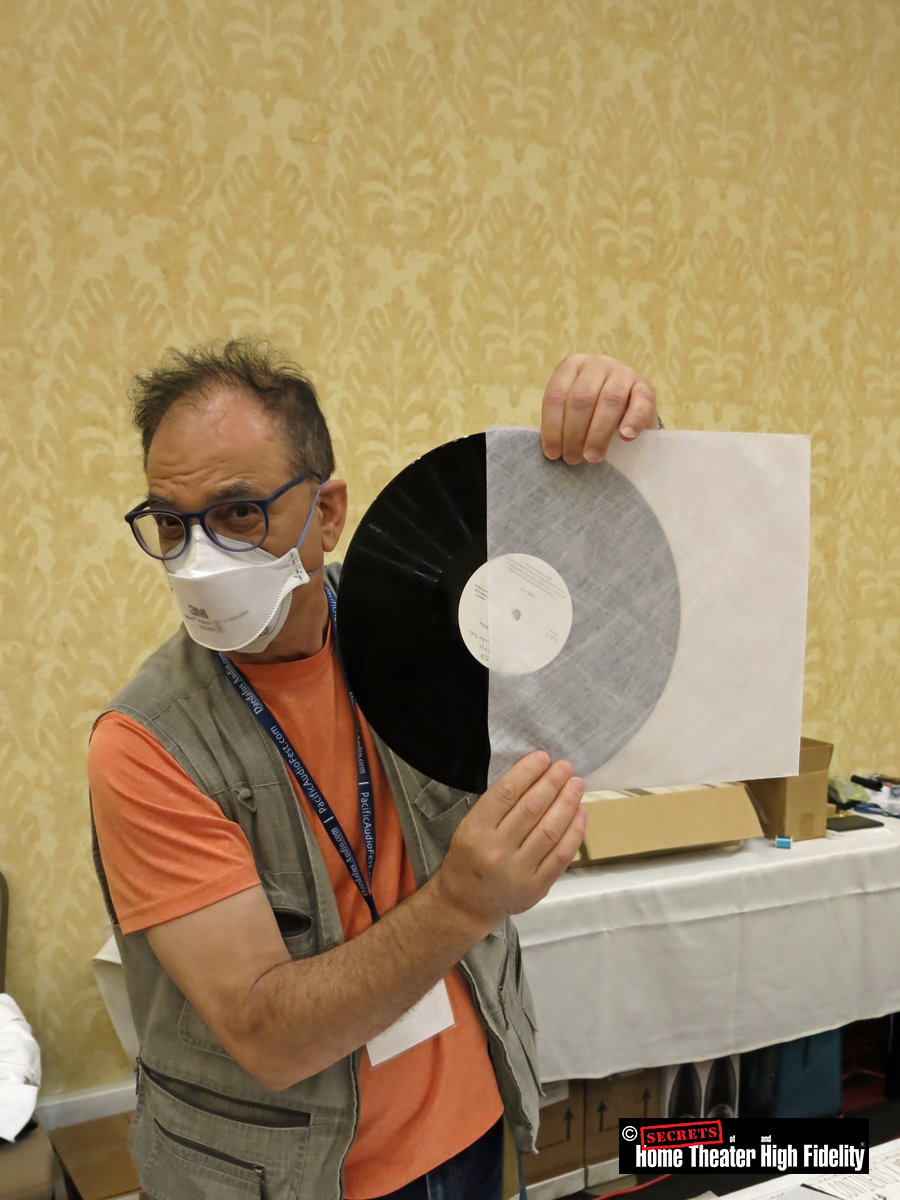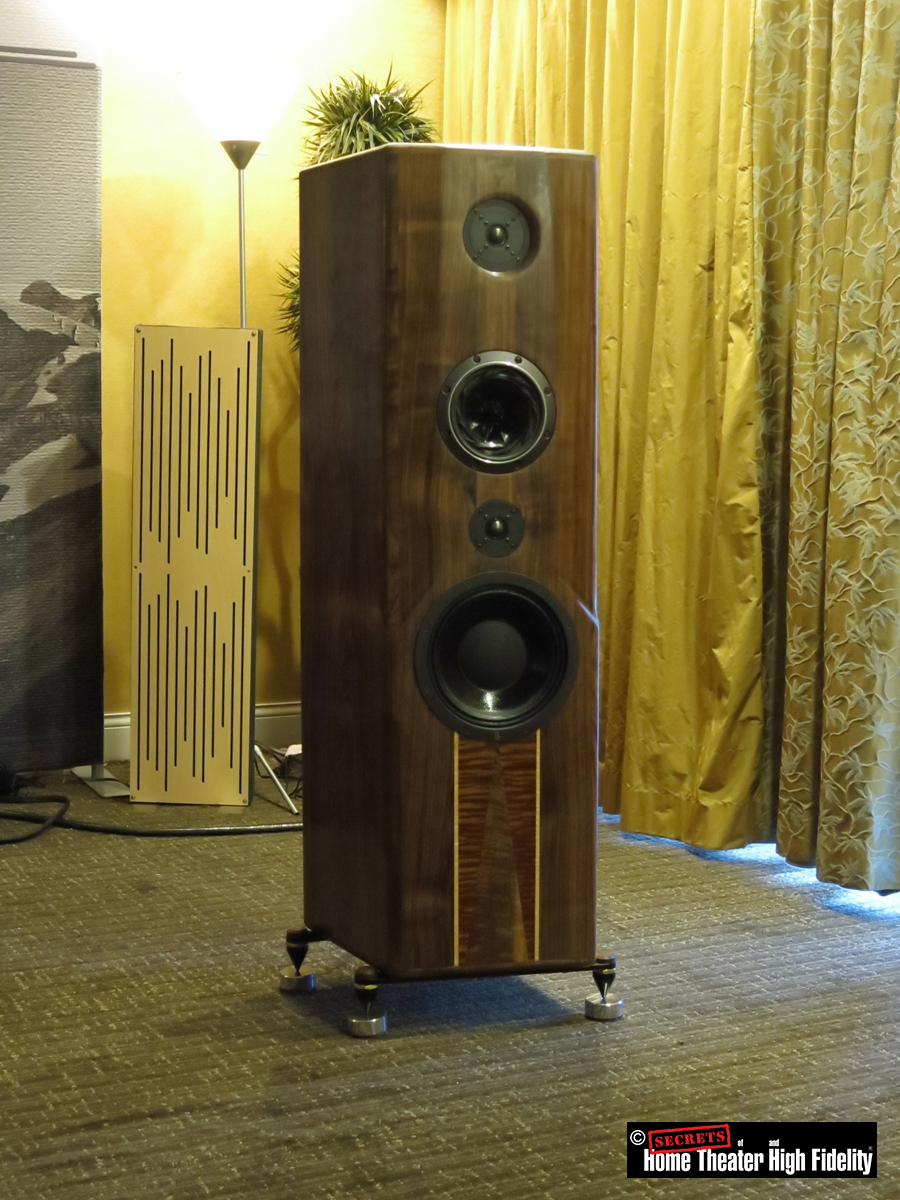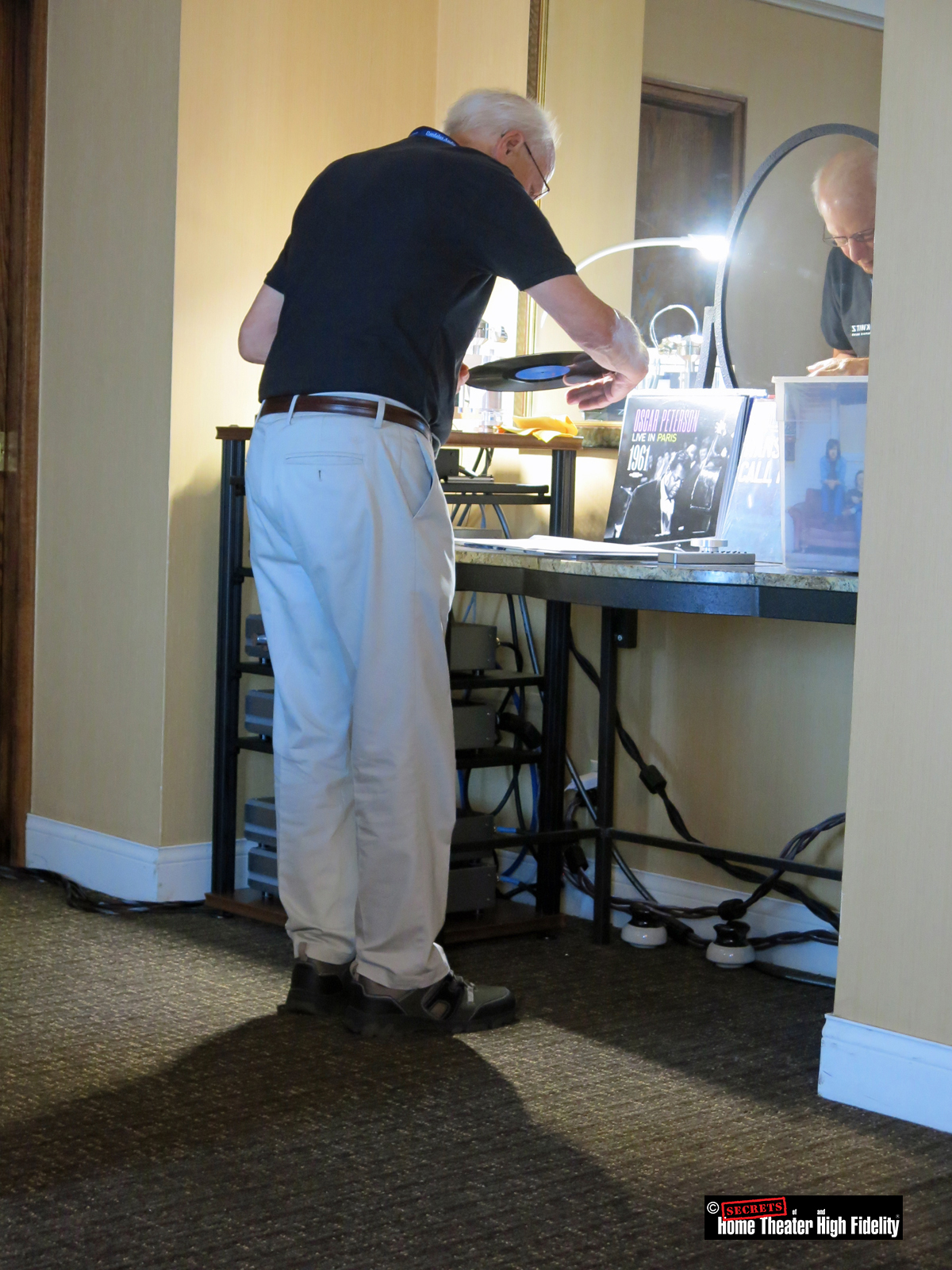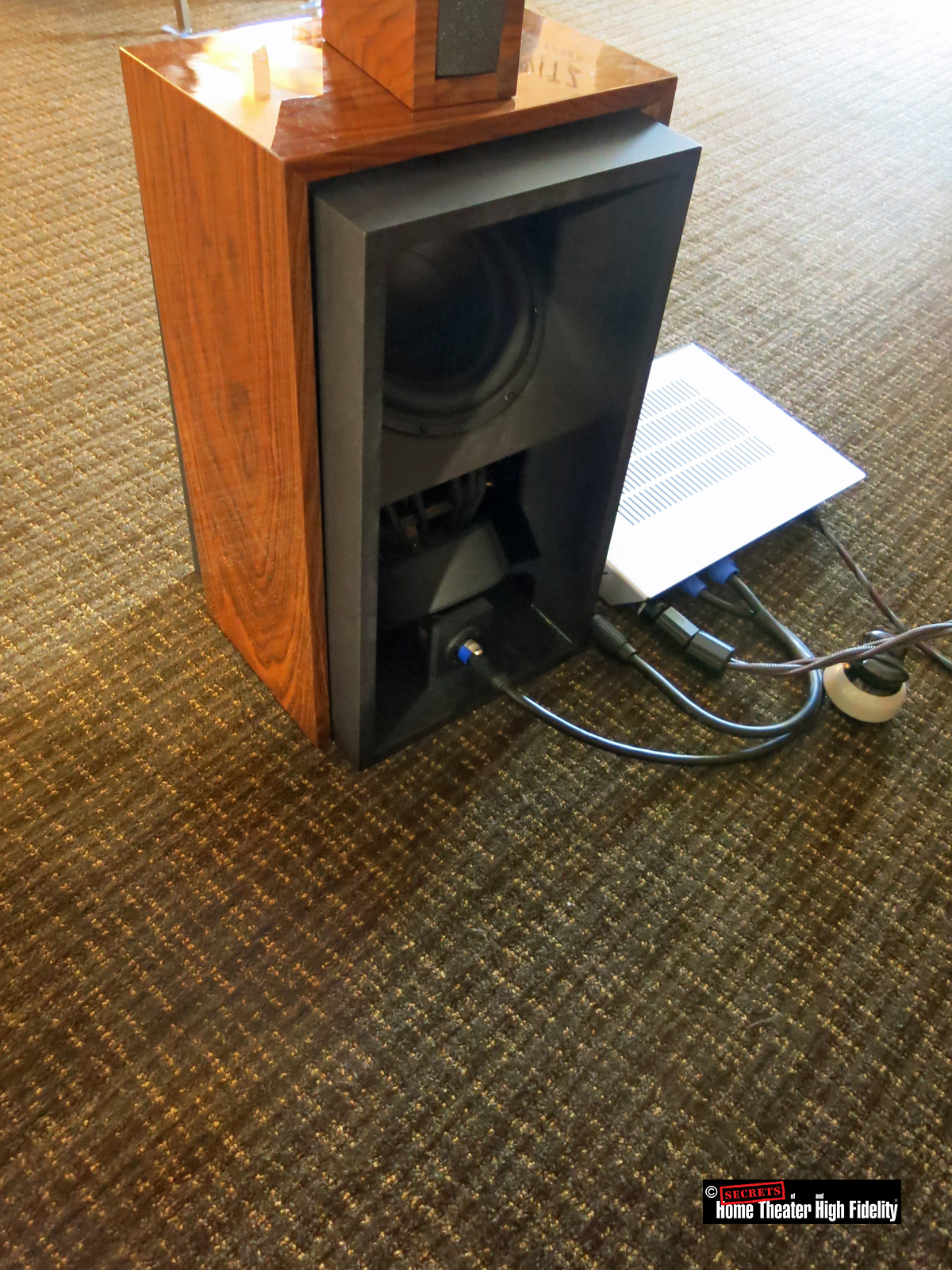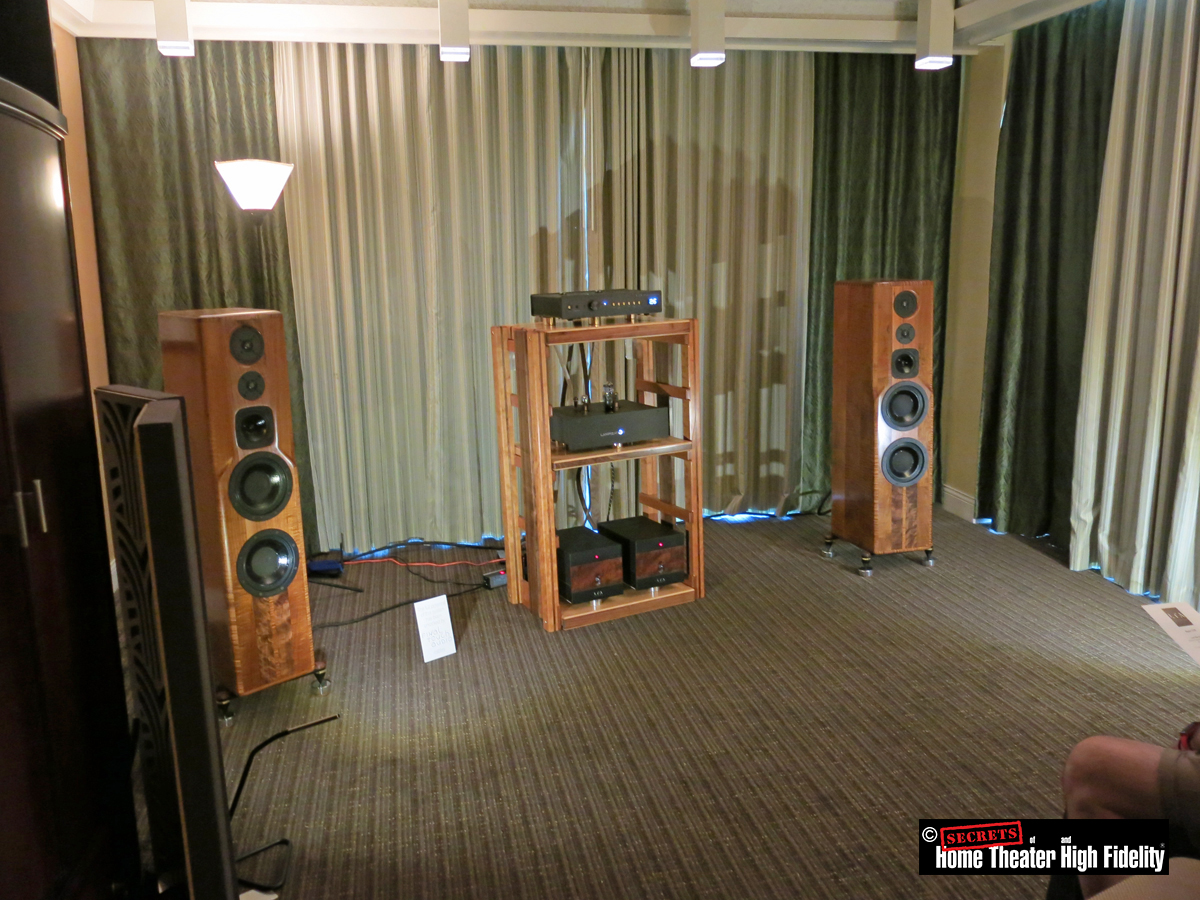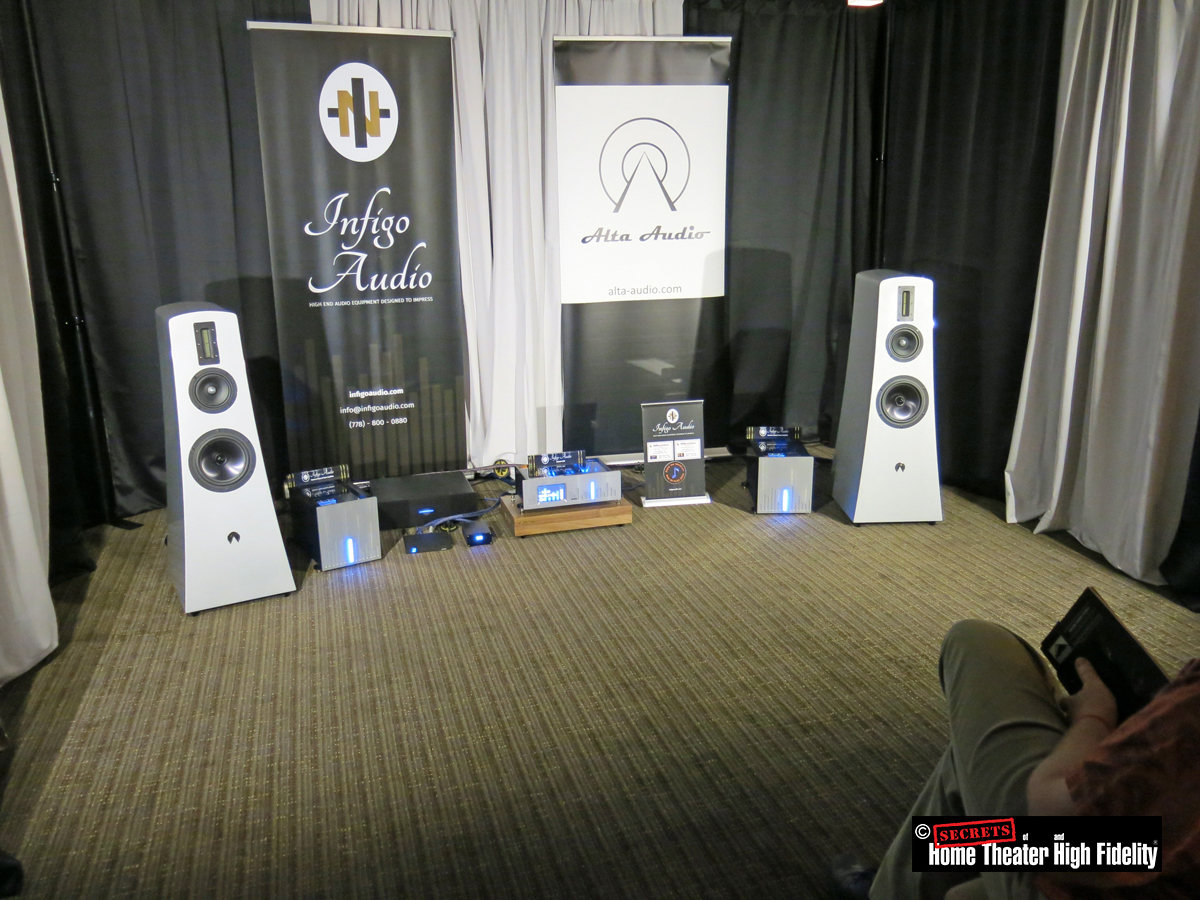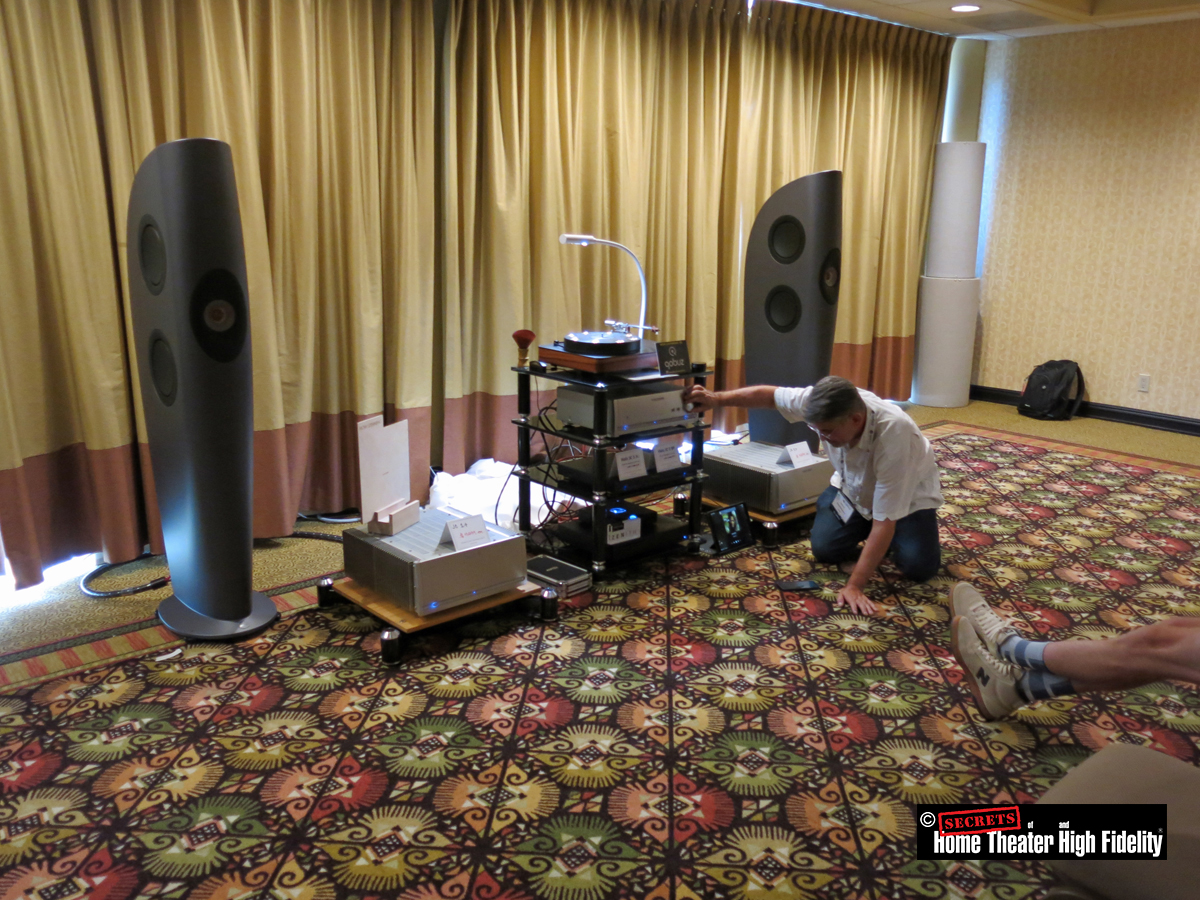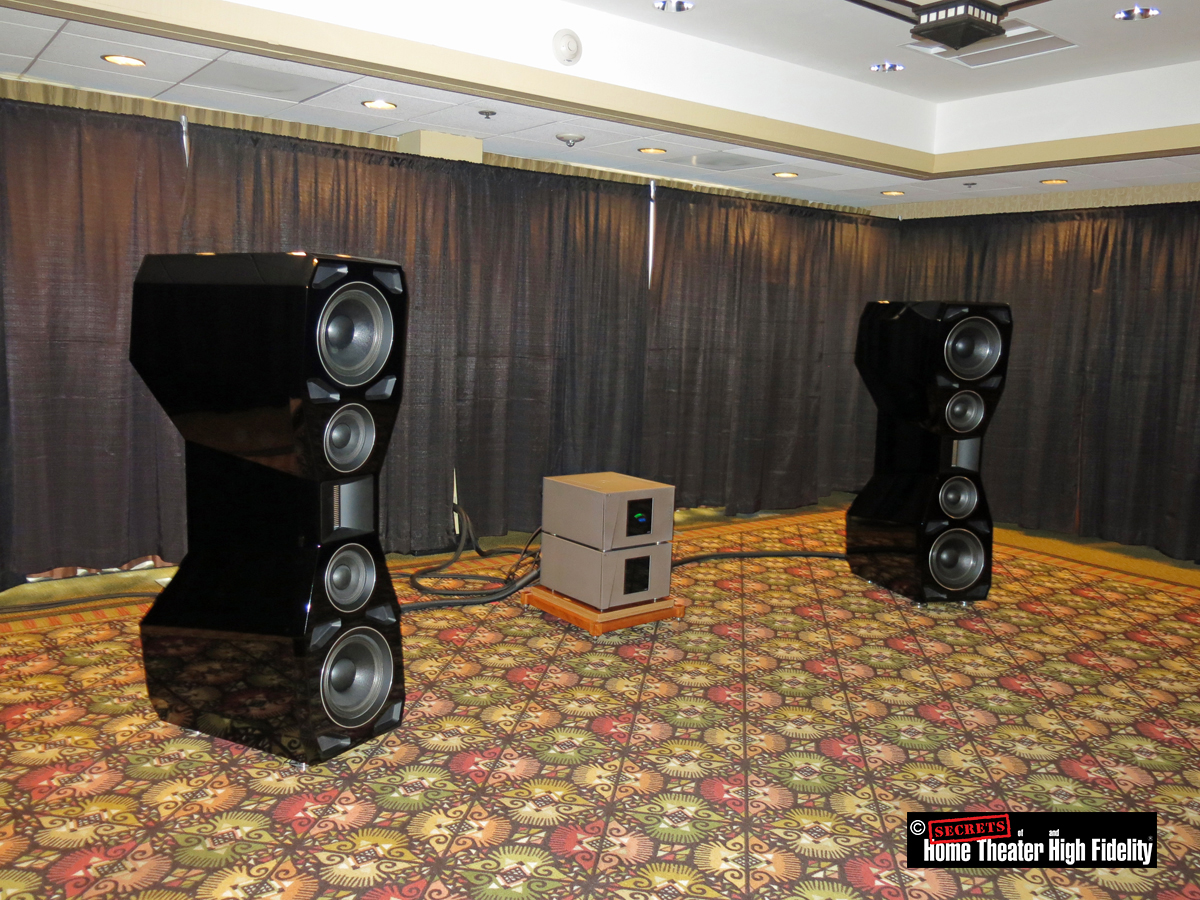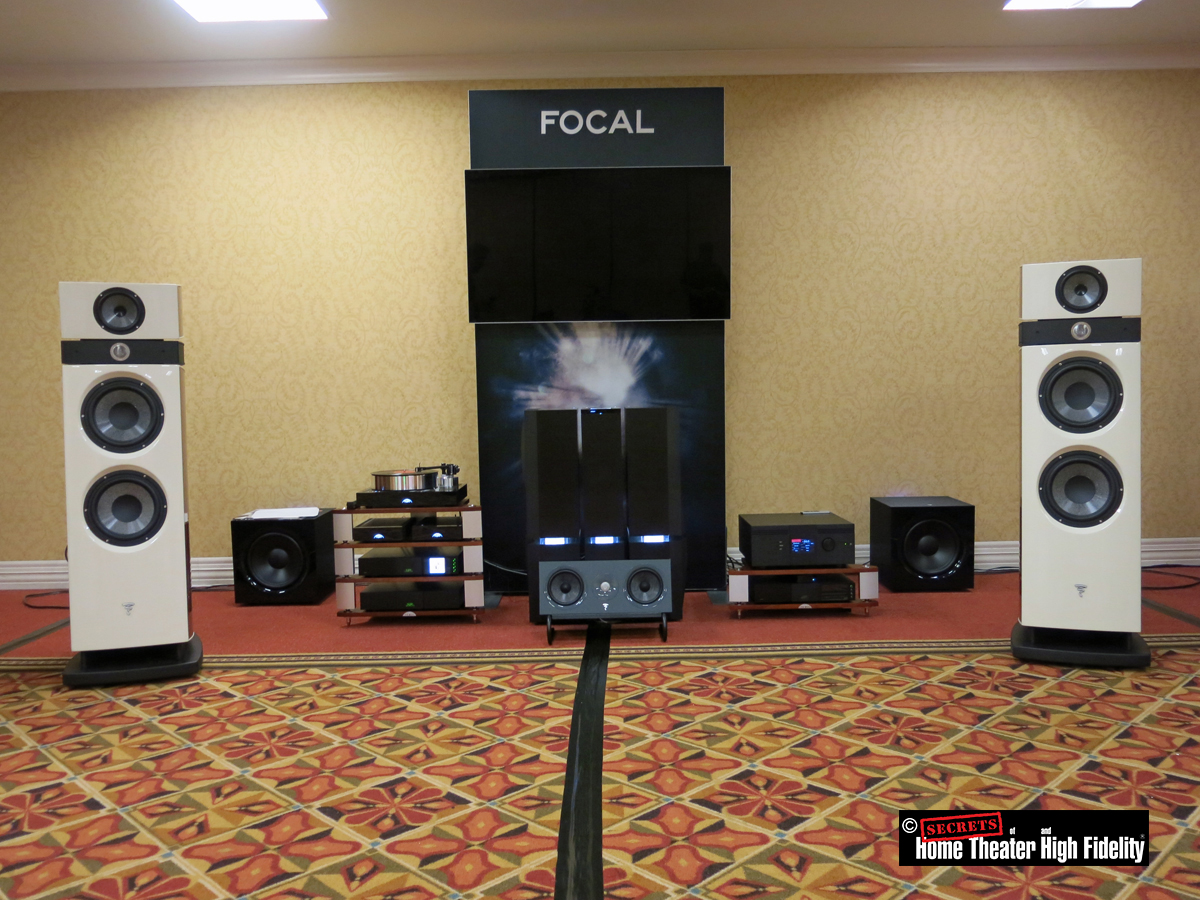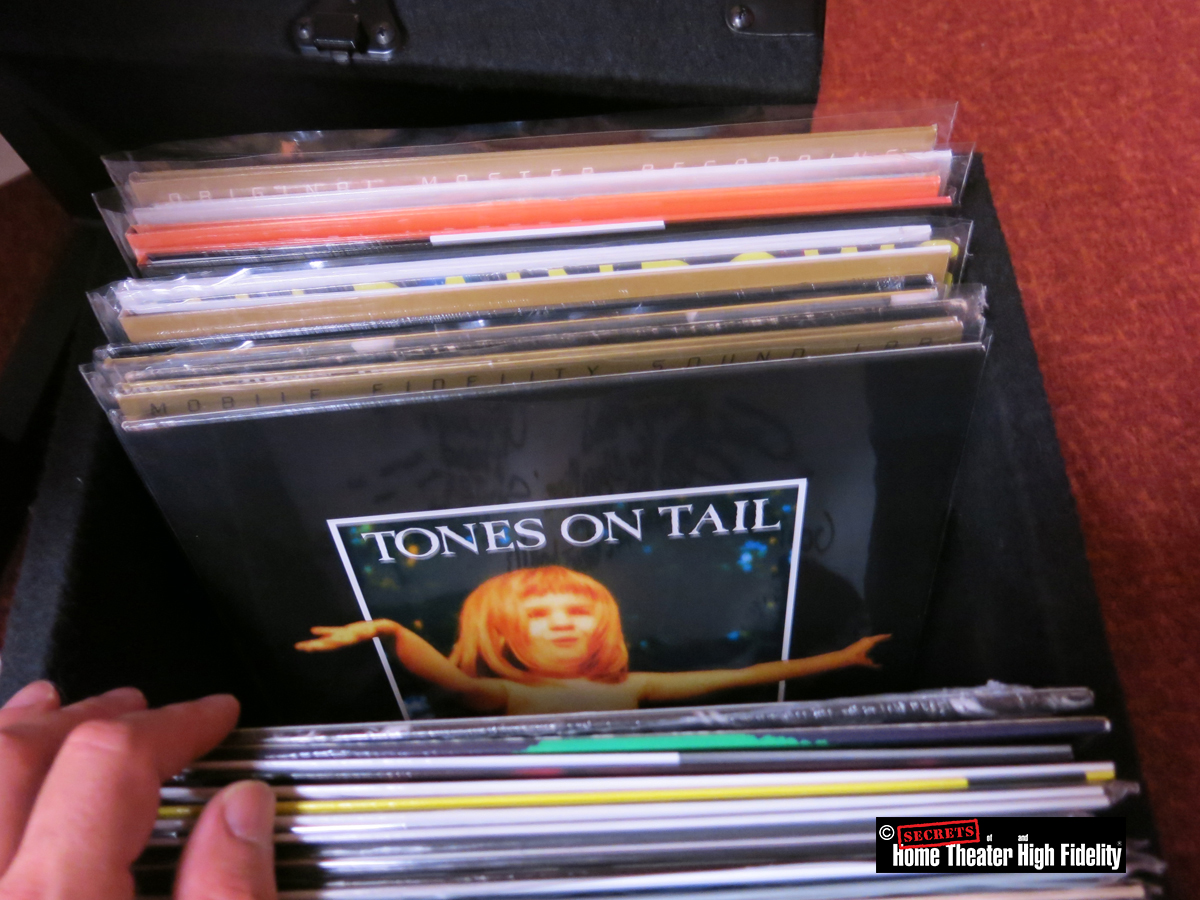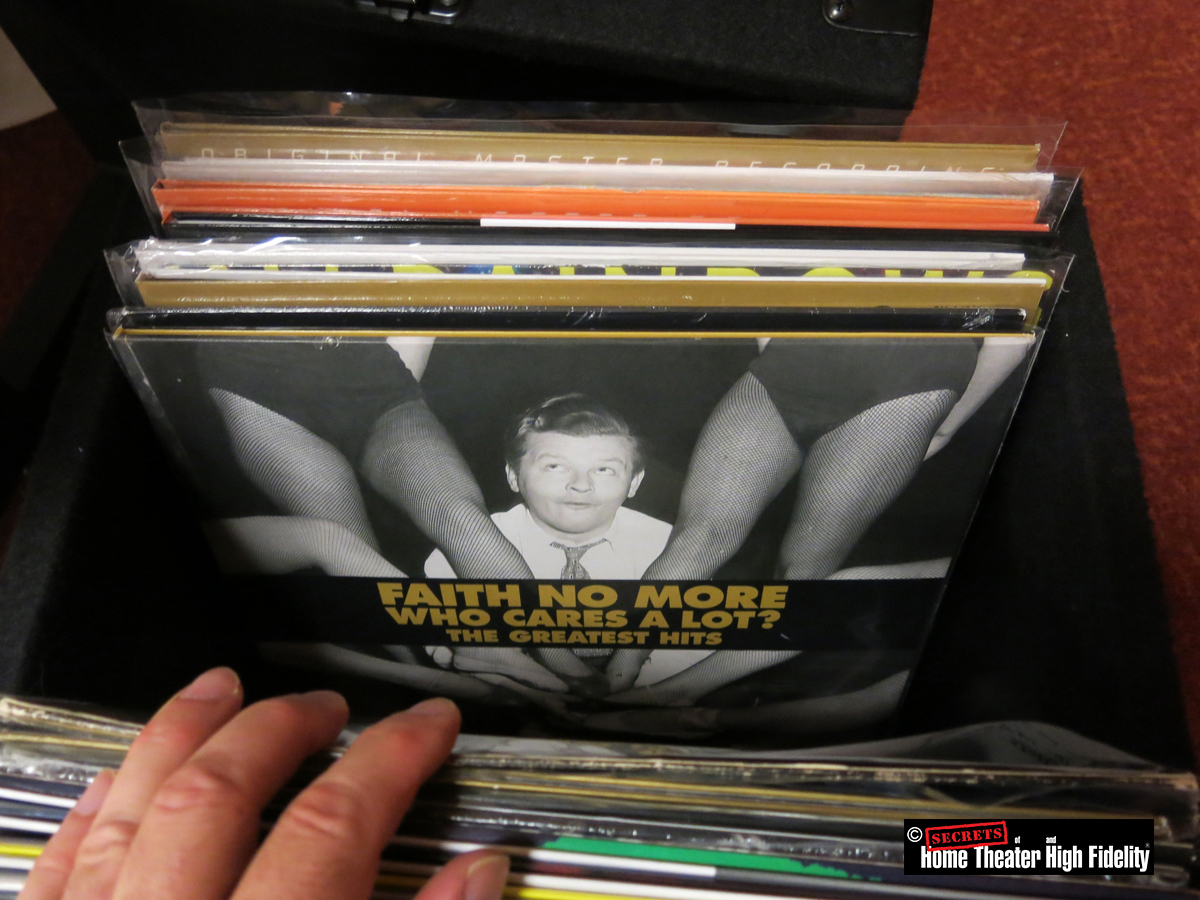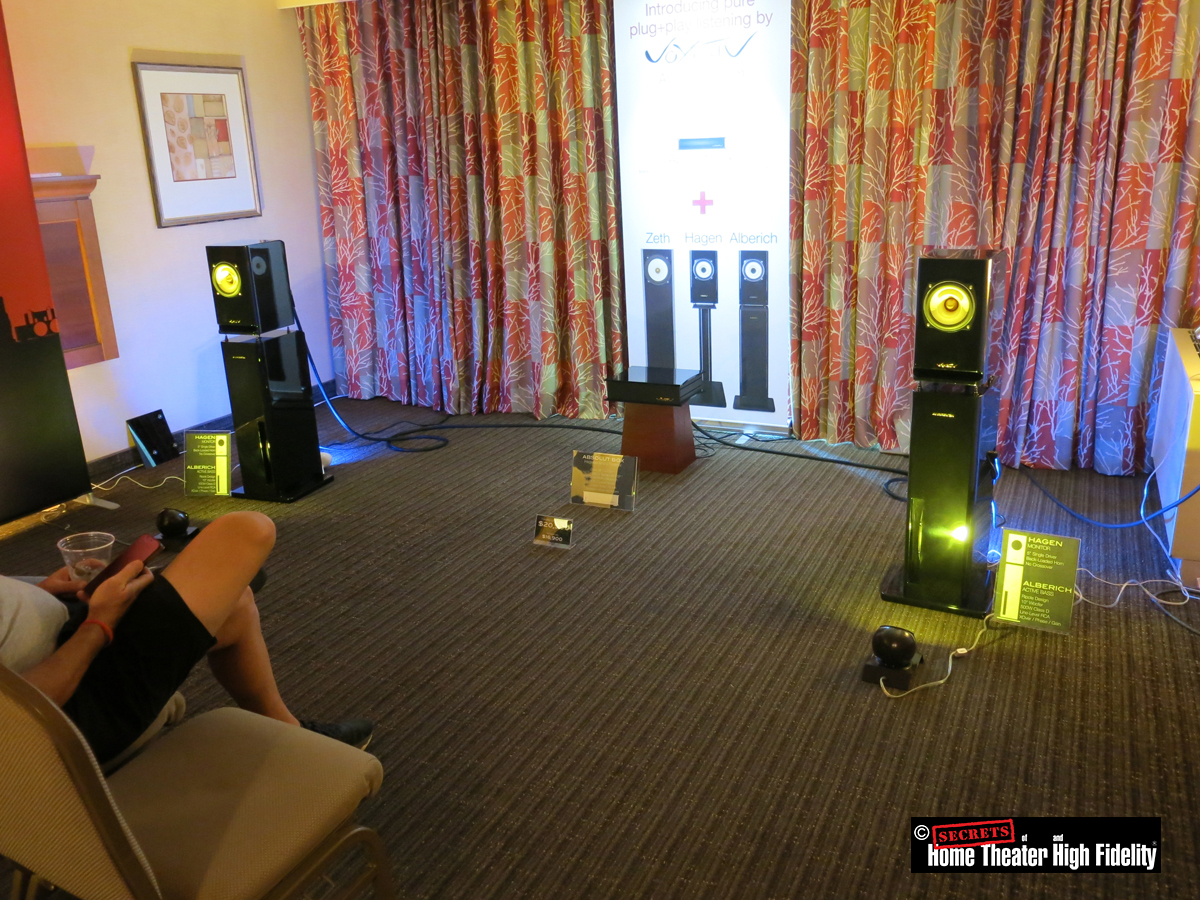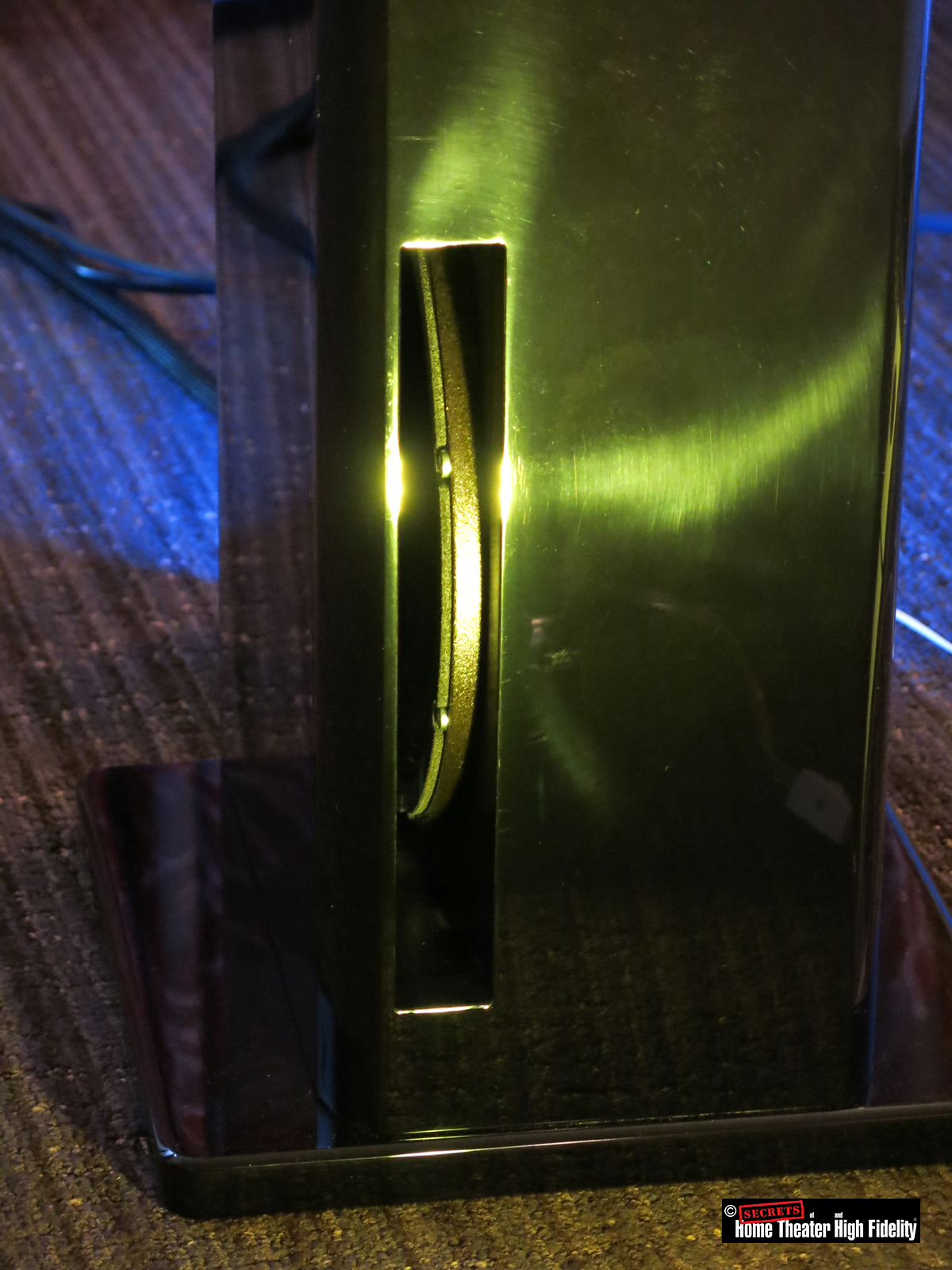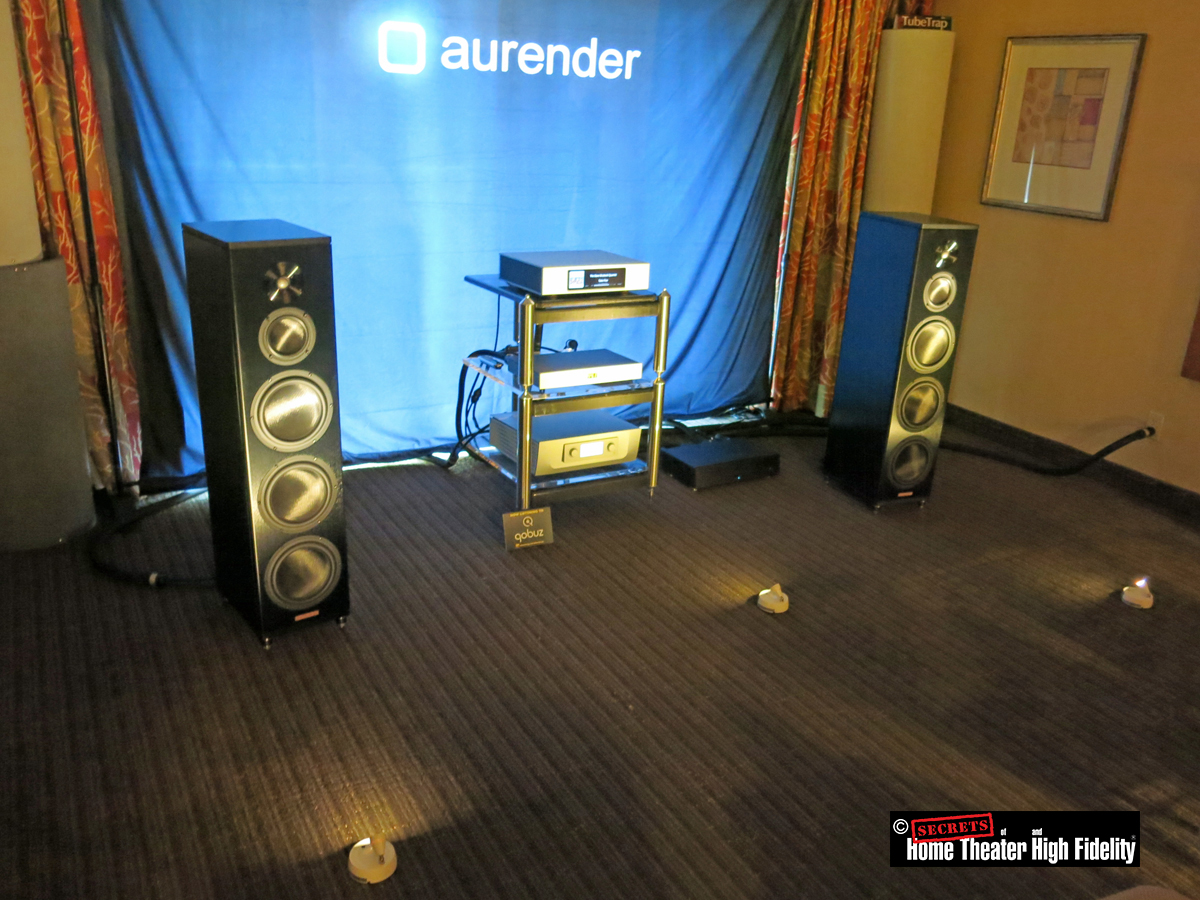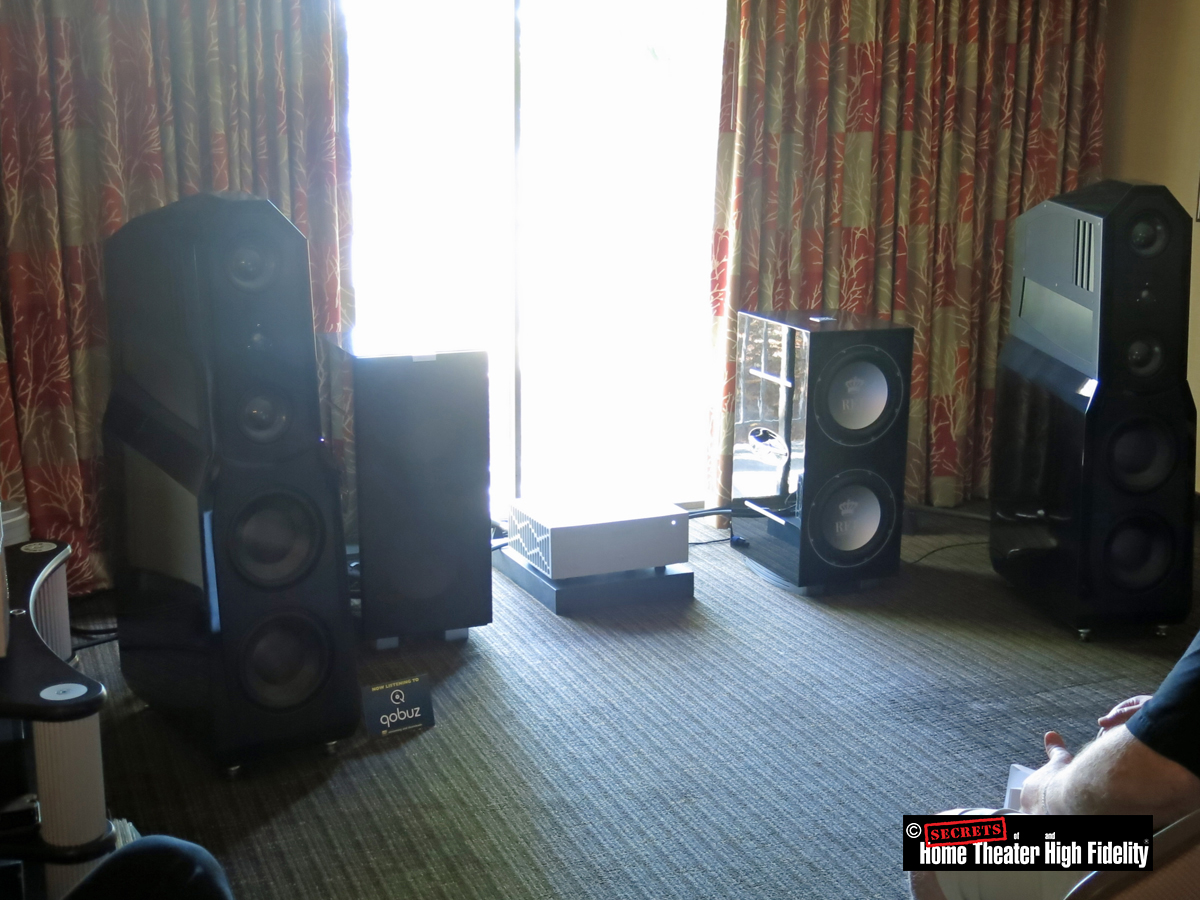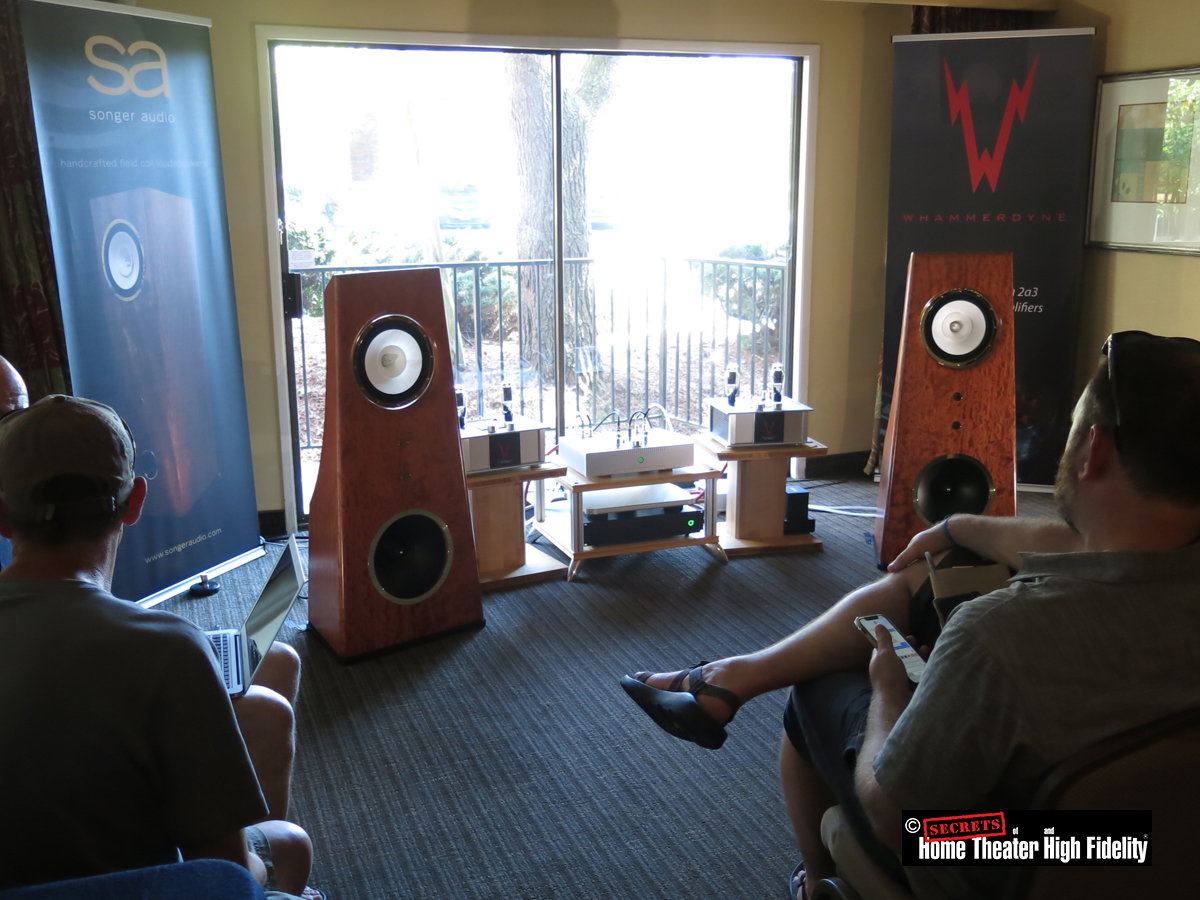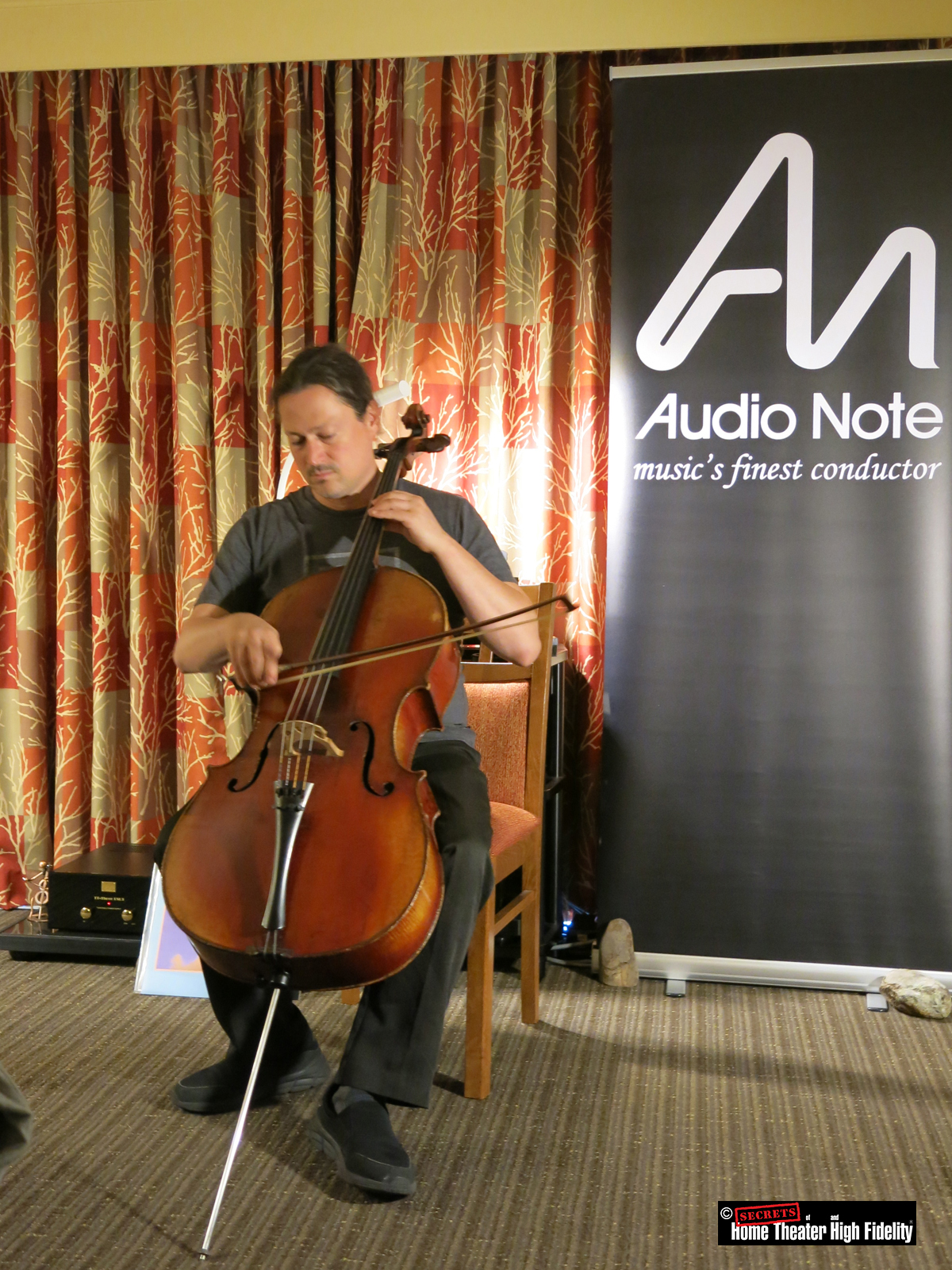The inaugural Pacific Audio Fest happened(!) July 29-31, 2022, one year later than was planned due to, wait, what was it again? Oh yeah, COVID. I visited for the middle day (Saturday) only since I’m able to make the drive to Seattle from my home in Portland. Mask wearing was at about 20%. The NW region is enjoying its now annual heat wave which meant a high of 93 degrees in Seattle. That might not sound like much but it’s not something the air conditioners in the airport Hilton were designed for (apparently). Some rooms had them on and some had them off for the sake of the sound but that didn’t seem to have a direct bearing on the temp in the room. Combine a warm room with COVID fears and it might not seem like the best environment for listening but amazingly enough, the sound in many rooms was good enough to warrant extended listening. “You know you’re an audiophile when…”
I ran into the PAF founder, director, and pretty much guy-who-did-everything, Lou Hinkley at the registration desk. Lou has been taking his wonderful Daedalus speakers to shows for years and you might have thought he was tired of that. Maybe starting a show in his own backyard is a middle ground.
The venue is a large and complex hotel with at least two wings and the show was spread between them. It wasn’t the largest audio show but that was perfect for my one-day visit.
I started with one of the large ground-floor rooms dedicated to headphones and several luthiers. Vocabulary word of the day: Luthiers: “a maker of stringed instruments such as violins or guitars”. I can’t believe I didn’t get you a picture of their beautiful instruments on display but hey, I was there for the gear.
Near the door of the headphone room was Tom Christiansen of Tom Christiansen Audio.
His new flagship HPA-1 features balanced and unbalanced inputs and outputs. An Alps Blue Velvet potentiometer mated with high-quality op-amps to make a super-low distortion design. We had an extended conversation about the use of feedback which the HPA-1 uses liberally. I asked what he would say to the maker of another HPA-1, Nelson Pass. “Hello” was the immediate answer. This HPA-1 smoothed the sound of the Focal Clear phones (from what I remember) and did not sound fatiguing in the least. The song playing was Dire Straits’ “Money For Nothing”. Would HiFi shows even be possible without Dire Straits?
At the Audeze table, I found Radiohead’s “Tinker Tailor Soldier Sailor Rich Man Poor Man Beggar Man Thief” on the Linear Tube Audio’s player, connected to their microZOTL MZ2 which in turn was connected to some Audeze LCD-XC cans. I’ve complained that these cans are more akin to strapping speakers to your head than headphones but in this case, the speakers come with soooo-comfy pillows that are addicting even when music isn’t playing. This Radiohead track has some wonderfully textured recorded sounds from somewhere – a refrigerator defrost cycle perhaps – which amount to ASMR embedded in soft music. The closed-back cans did an impressive job of keeping the room noise out while the microZOTL presented long tails of those sounds (whatever they are) as I had never heard before. I so wish I could have used this track for the other demos throughout the show.
I did use it a couple of seats down where the open-back version of the same phones, LCD-X, were being driven by a Chord Hugo TT2 amp. The room was coming through the open-backs quite readily but I could detect that particular kind of digititis that I hear from Chord DACs.
I moseyed over to the Focal table and went straight for the Utopias driven by the beautiful SPL Phonitor xe. Playing “Tinker Tailor Soldier Sailor Rich Man Poor Man Beggar Man Thief” once again, I heard some things I had not heard through either of the Audeze cans. It’s a good thing I don’t need headphones because it would be an expensive race to the top.
I chatted with the guys there for a little bit about beryllium drivers. The Focal version is made of the lightweight metal while some new arrivals (Sivga) have a beryllium coating over some other metal (presumably aluminum or magnesium). It’s unclear what a coating like that would accomplish – a lightweight metal over a not-as-lightweight metal. But hey, human ears are super-sensitive and that’s why we buy this stuff. I was concerned about safety – you may recall that when beryllium tweeters were first introduced there was some fuss about what to do if the tweeters were somehow damaged. First step: Cry. It seems to me that someday, somewhere, someone will find some way to damage a beryllium headphone driver. Still, it might take some doing to get any piece of that broken driver into your body. “Don’t snort the driver” was our conclusion.
I took my worrywart self over to the next room and asked the poor fellow at the iSonic ultrasonic record cleaning booth if they had ever measured for ultrasonic noise escaping from their cleaners. After a long discussion about the necessity (or not) of doing such a thing (for the record (no pun intended) ultrasonic noise can travel through the air, the question would be how much (if any) escapes from the fluid bath of an ultrasonic cleaner) we moved on. The newest model, pictured on the right side of this photo:
– features computer control of all functions. By clamping on the middle of the record the cleaner it is able to accommodate smaller records (like your 45s) much more easily than the popular Audiodesk cleaners which require some fiddling with an adapter to hold the 45. Similarly, the clamping method means drying can be accomplished with a high-speed spin rather than noisy fans. Smart.
If you’re worried about moisture that might still be remaining on your records no matter the drying method you could try these sleeves:
– from MA Recordings. Fifty sleeves can be yours for $33.33. Woven from two different microfibers the sleeves will not trap moisture as any other plastic sleeve would. Is this another thing I have to worry about?
Finally, I went upstairs to the dedicated listening rooms. Top floor first, the Daedalus room was using VAC components as many at the show were.
In this case, the Statement 452 iQ was making a visual as well as aural statement through the massive Daedalus Apollo 11’s with updated drivers. The larger midrange drivers are new so no pics of these on the Daedalus website yet. These man-sized speakers are about five feet tall so only for certain rooms and wallets.
A Lampizator Golden Gate 2 DAC was creating the music and it was all working. I was amazed that standing up and walking around the room made no difference in the sound. I did find myself focusing in on the speaker drivers – trying to hear what they were doing – during quiet passages and then just enjoying the music when it got a little louder. The room or the amplification could certainly be contributing factors to what I was hearing.
Down the hall I found an entirely different concept in speaker and indeed system design, the Linkwitz room had their open baffle LX521.4 speakers powered by Linkwitz PowerBox 5-channel amplifiers with active crossover circuits, all designed specifically for these speakers.
The source was a massive Basis Audio Turntable and Pass Labs phono and pre-amp. I was glad to see vinyl but disappointed that they had no Radiohead! Nonetheless, I was intrigued enough to stay for quite a while. The speakers are a complete re-think of what a speaker should be – especially the two woofers in a vertical dipole arrangement.
Open baffle speakers require a lot of space from the back wall, two meters is recommended for these. It wasn’t possible to do that in the hotel room and still, the sound was great, not muffled. Very open (of course) and fast, effortless. I am left wondering how they would do with a thick mixture of guitars, bass, and drums however. .
Down the hall, I found a second Daedalus room. If you run the entire show you can have as many rooms as you want. In this case, the speakers were the more affordable Argos v.3 driven by a Lampizator Baltic 3 DAC and Linear Tube Audio preamp (MicroZOTL) and monoblocks (ZOTL). I could have stayed there all day. With Daedalus speakers, there’s not much of a difference in quality between the different offerings, just magnitude, and how much the room is filled. This was a small room, those human-being-sized Apollo’s from the first room might have blown the room occupants into the hallway. Since I had just come from the open-baffle Linkwitz room I thought about the difference. Yes, these did sound like boxes by comparison but the bass was not challenged by the recording and overall I think this is what the recording was intended to sound like. I think I was able to request and hear some Steely Dan in this instance, my go-to request for the rest of the day.
In the NFS Audio room, Nothing is For Sale. They are there because it’s fun. When I visited, the proprietors, er, partiers, were in an adjacent part of the room chatting up a good time. I don’t know who makes these speakers but the blue automotive finish was beautiful and the horns sounded great playing “Meet Me in the Morning” by Mary Lee’s Corvette. I find myself appreciating this hobby more and more.
In the Infigo Audio room CEO and founder Hans Looman couldn’t wait to talk about his babies. The launch of Infigo has been delayed by COVID like everything else and that’s pretty hard when you’re trying to start a business. We’ve all missed out on these unique components, designed and built in British Columbia, Canada.
The plastic covers are not just for shows, they are there for you to show off the unique internals (a handsome metal cover fits neatly over the top if you prefer). That pic is of the Method 3 monoblock which has hundreds of transistors tucked away in those heatsinks along the sides. They were cool to the touch however due to some sort of proprietary biasing design (Hans could tell me, but then he’d have to kill me) that keeps the power consumption at 35 watts of class A at all times but somehow increases the power (or current?) when the music needs it. I asked if it was class H and it’s not. I don’t get it but I don’t want to die.
Playing from a Method 4 DAC and a Fluvius streamer (also available from Infigo) through Alta Audio Adam speakers, I had no doubt that it was class-A amplification. I was struck by very natural-sounding male vocals. And then on a different track, with a female vocalist, I was struck by the very natural-sounding female vocals.
Infigo is a new company, making its way in the post-COVID world and they deserve a listen.
The very-established Parasound company had a room with their new JC1+ Monoblocks, Halo JC2BP preamp, and Halo3Jr Phono stage. The handsome turntable was a Dr. Feikert Woodpecker Deluxe with Schick Tonearm and MoFi UltraGold MC Cartridge. All driving a pair of KEF Blade Metas. The turntable had to wait for a Qobuz music streaming demo to finish, however. Some of the Qobuz tracks were played a bit too loud in my opinion and seemed like the KEF’s cabinets were providing almost as much sound as the drivers. It would have been fine for a party but not so much for HiFi. Switching to Shelby Lynn’s LP “Just a Little Lovin” the volume and sound were much more to my liking. I had to move to a center seat to avoid what sounded like congestion in the mid-bass. Once I did so the sound became much more intimate – as it should have for this intimate recording. It would be interesting to hear it all in a more suitable room.
While the over-driven Kef’s were sounding a little bit like a PA system, in the next room, a slightly smaller room, the monstrous, PA-sized, Divan Nobless speakers, angled aggressively at the listeners, were playing Metallica – perfectly parsed with each instrument having its own space and no sense of strain of anything.
This was the testosterone room with speakers and components that score a negative WAF. As in, she will leave you. The pre-amp and amp a CH Precision L1 pre and M1 monoblocks respectively, would take some explaining just due to the space they take up but those speakers and the Wadax Reference DAC and Reference Server would have her calling a divorce attorney. For sure you’d get to keep the stereo. I wish the big guy running this room had been open to playing requests. Post-Metallica it was on to some soft something or another which in no way fit the system or its capabilities.
When I entered the Joseph Audio room they were about to switch from their floor-standing Pearl Graphene to stand-mounted Pulsar2 Graphene two-ways. (Hence the hand pointing at the speaker stands in the photo.)
I asked to stay with the larger speakers, I needed to come down slowly from the Divan Nobless experience and was politely accommodated. The Josephs were driven by Doshi Audio Monoblocks and preamp (all tube components) and an Aurender music server. This system got me to thinking, the well-established speaker companies learn some things over the years and make fewer and fewer errors. I was not a fan of Joseph Audio back in the day but this was a system that sounded like what a stereo should sound like. I would be happy to spend evenings with this system. The sound was forward and present but not overly bright on the top end and not phased if the music got complex. Softer music was still the order of the day but the selection, Rachel Price as a guest singer for a Jazz trio blew the room away.
Focal is another established speaker company that does a lot of things and it’s getting harder to find them doing anything wrong. Especially at the top of their line. They are partners with Naim now and these Utopia Maestros were perfect as driven by the massive Naim Statement Monoblocks. Playing “Fading Sun” by Terje Isungset the melt-your-heart vocals were right there in the room. Switching to vinyl playback of the live Talking Heads album Stop Making Sense on the limited edition Naim Solstice the sound effortlessly scaled and again I was transported.
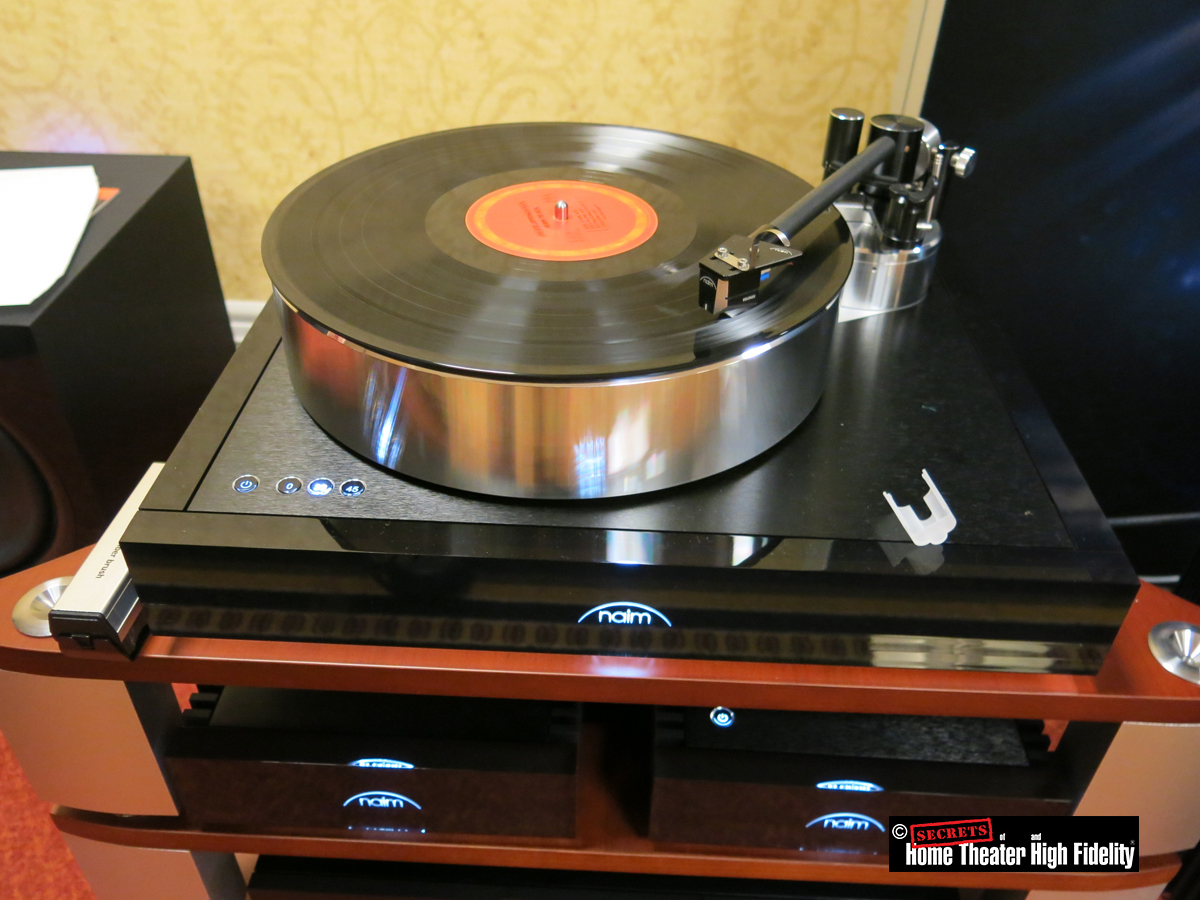 The vinyl collection was off in the corner and.. what’s this? At an audio show??
The vinyl collection was off in the corner and.. what’s this? At an audio show??
Faith No More! Are you kidding me!? I didn’t have time to wait for this record to reach the top of the playlist, I should have taken it with me to scare the bejeezus out of the folks in the other rooms.
That would not have worked in the Hagen Audio room. Would not have worked in the least. They were playing a Nouvelle Vague cover of the Dead Kennedy’s “Too Drunk to F*ck” when I walked in. Okay then! Maybe Diana Krall will cover it next.
Those speakers are Hagen Monitors (single driver, no crossover, back loaded horn) on top of Hagen Active Bass 10” Woofers. The woofer design is a 500W Class D amp driving back-to-back woofers. That is indeed the side of a woofer you’re seeing here.
I couldn’t get a good picture of the back but the port is much larger there. They call it a Ripole design. Never heard of it. Google has of course so you can read about it as I did. I did hear it in the room though and it was impressive. The sound in this room was fantastic fun. The source was also from Hagen Audio, their Absolute Box which is an all-in-one streamer and DAC and integrated amp. I would expect to be missing some portion of the high end with a single-driver speaker but I wasn’t. Nor was I bothered by the usual class-D grain. Just fun.
Aurender had two rooms, one simply displaying all of their products but not playing anything and next door one of their servers driving a Berkely Audio Design DAC3 and a Constellation Audio amp driving Magico A5s. I was surprised to hear something that had been absent throughout the show, some digital smearing. I’m thinking it was more the famously revealing Magicos than the well-regarded DAC. Still, there was something special about the system and its ability to separate the instruments in complex passages. I wish I could have heard some vinyl to sort it all out but that’s not what Aurender does. Some cable and power cord substitution might have done it too. I’m not sure what was being used in that room but in the Reference Media room (Reference Media is a HiFi shop in Bremerton, WA) I found the only use of Shunyata power cords and conditioners anywhere in the show and I tell you, every other room would have benefited. Reference Media had the newest Boulder Amp components powering Eggleston Work’s large-large speakers (not like the scary Divan Nobless which can stop tanks) but way too big for this hotel room and it just didn’t matter, everything was great. I could have listened for hours.
In the Songer Audio room some very beautiful hand-crafted (even the drivers) open baffle speakers – the Songer S2 one-and-a-half-way dipole field coil models. Dang, I wished I’d asked what dipole field coil speakers are, I was just enjoying the music. I did ask about the wood – its African Rose Wood, in this case with a waterfall grain pattern.
The electronics were by Whammerdyne (sorry, no pics, was busy listening) and an MSB “Analog” D/A converter. Ok, the DAC sounds great but please don’t call it that, it’s gonna confuse people. I asked for some Steely Dan and “Hey Nineteen”. Fantastic. I needed to hear more. These are not the flagship speakers for Songer Audio however, those are a conventional box design. They were there in the room but weren’t going to be hooked up until Sunday, I headed back on Saturday night. I have to find some way to hear them.
Across the hall, the very much more old-school Audio Note speakers and electronics were exactly an even match for a live cello player – playing along with pre-recorded tracks that he had made (playing with himself as he put it). With my eyes closed, I could not discern which was from the live cello and which was from the speakers. Cello is in the sweet spot of most any speaker but still, impressive.
I had one more room I had to get to. The Matterhorn Audio Group distributes a number of brands including Kroma Atelier. I’m not familiar with that brand but was informed that the newest version of their 2-way speaker, the Julieta utilizes a Purifi mid/woofer and a Mundorf Air Motion tweeter. I don’t need to be sold on AMTs except perhaps their ability to fill a room, but it was the Purifi that I wanted to hear. Purifi is a Danish (aren’t they all) speaker component manufacturer that has been working on perfecting drivers by methodically eliminating distortion sources one by one. This involves a lot of computer modeling of course. I don’t think they are the only driver maker doing this but they seemed to have advanced it much further.
I was not disappointed. First off, the little 2-way Julieta went incredibly low with no break-up whatsoever. No break-up. But I didn’t really get how good they were until we switched to the larger, 2.5-way Norma which are not (yet?) made with Purifi drivers. Suddenly, Donald Fagan’s voice on “Babylon Sisters” was behind a veil along with everything else. If that switch hadn’t been made I wouldn’t have been able to describe what was so good about the Julietas. Much more research is needed!


